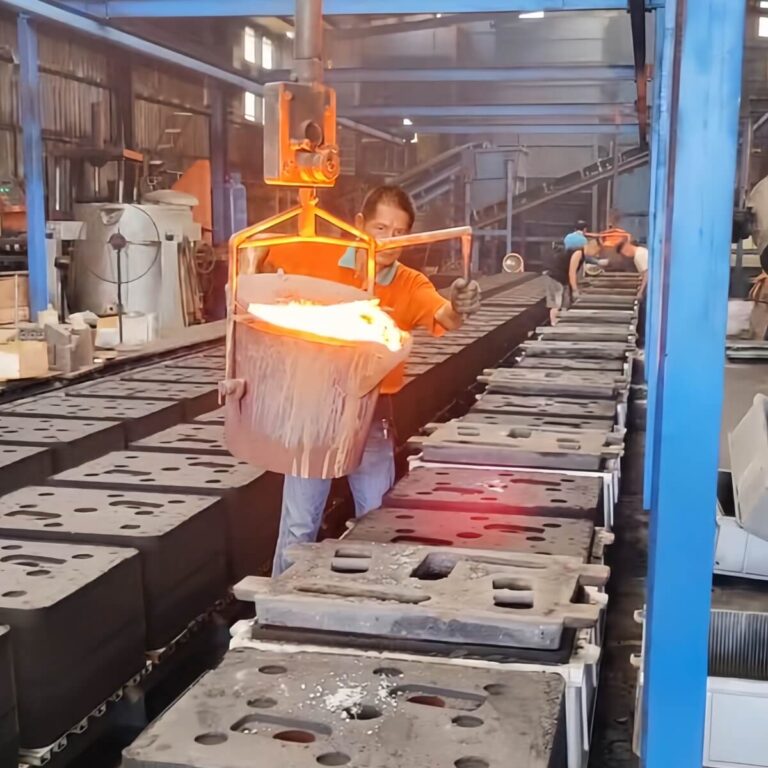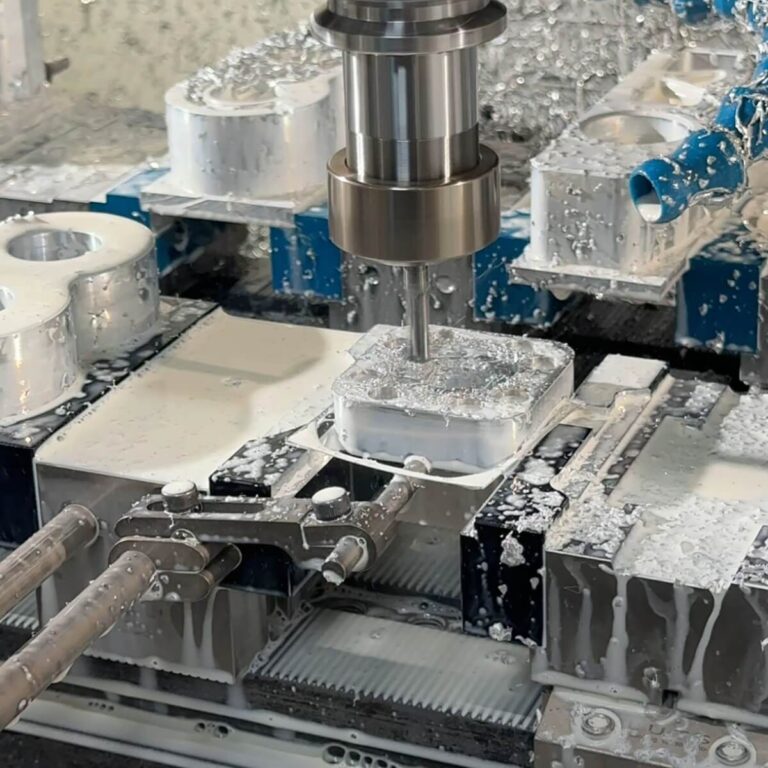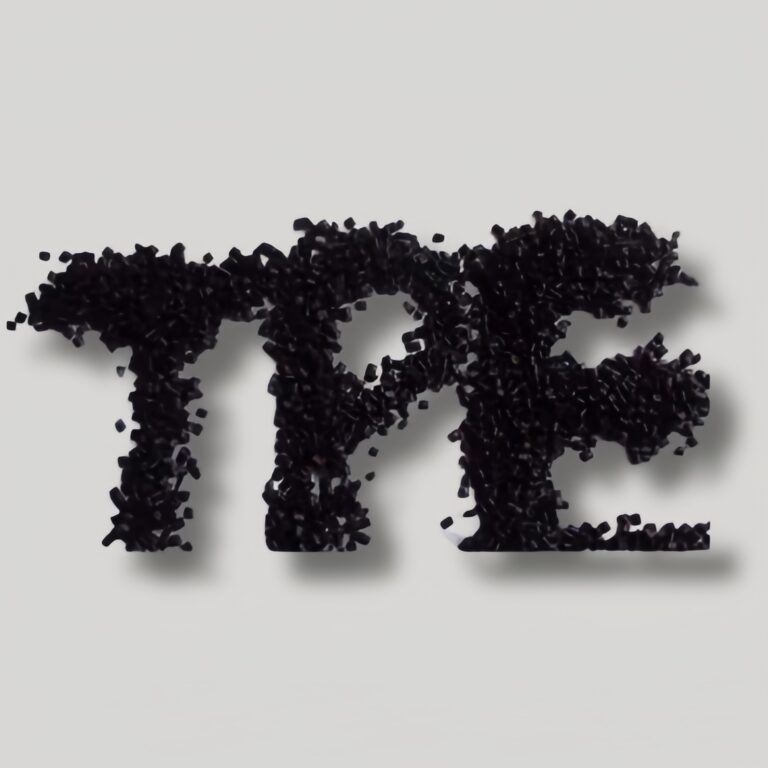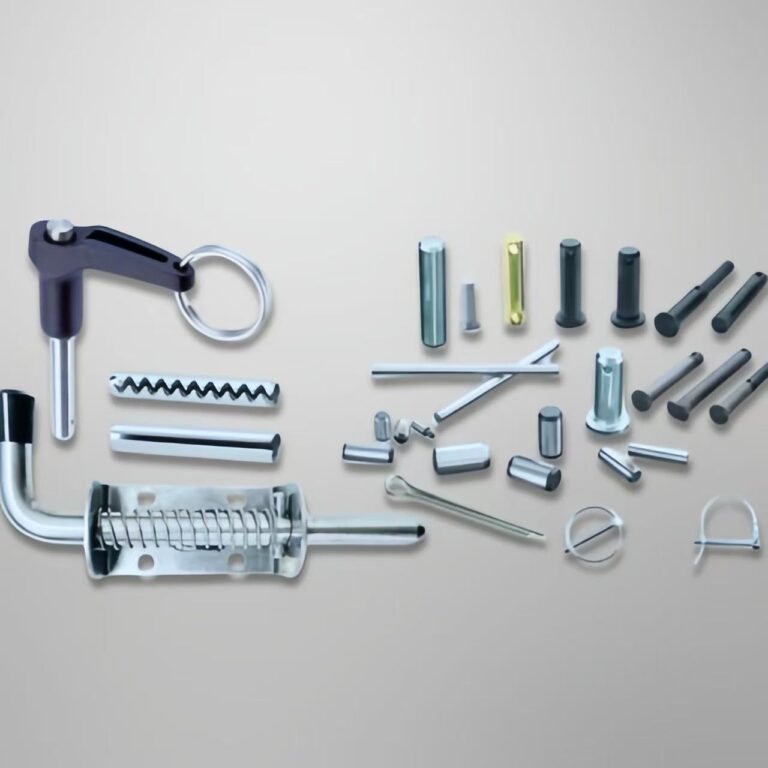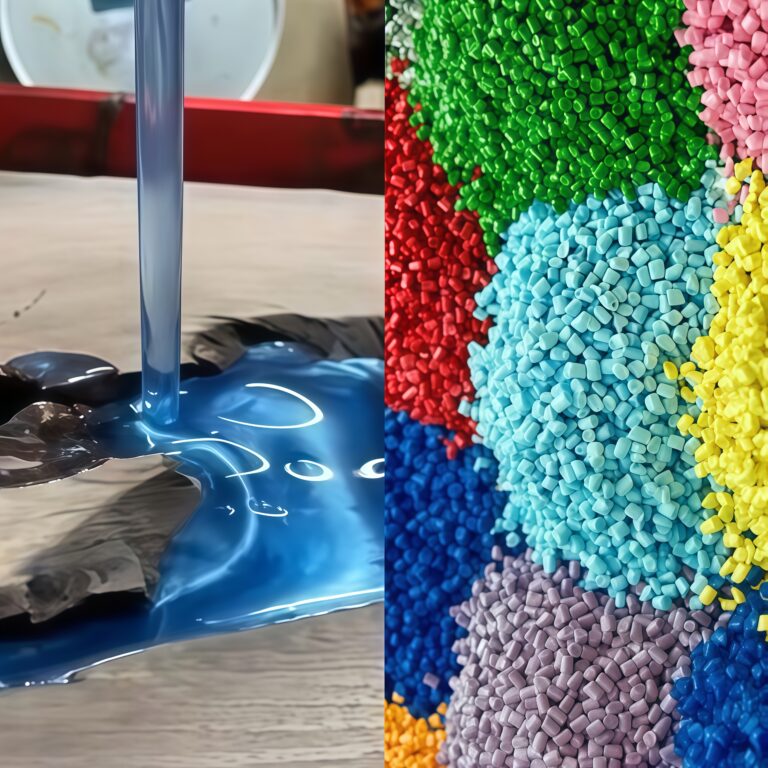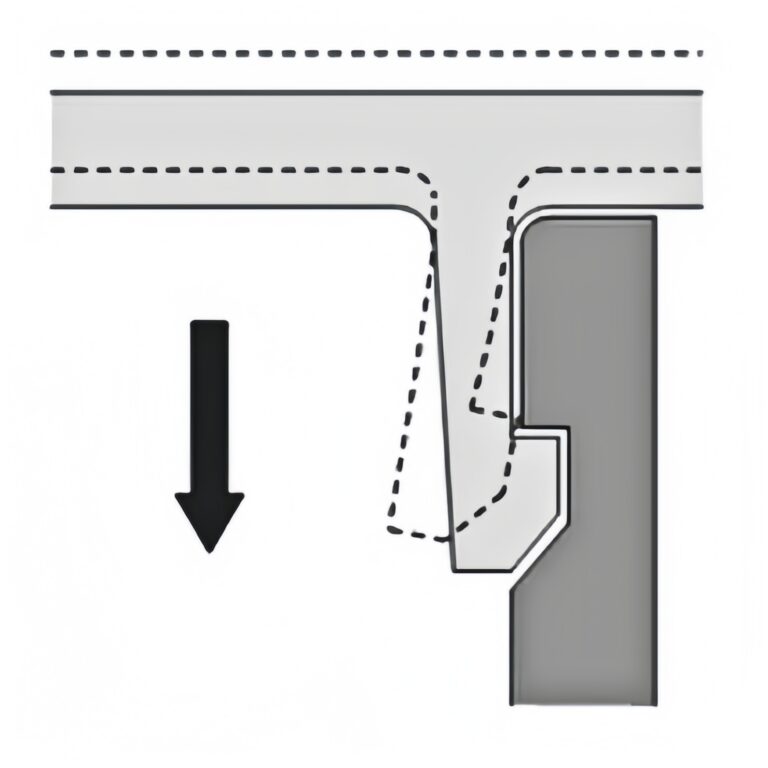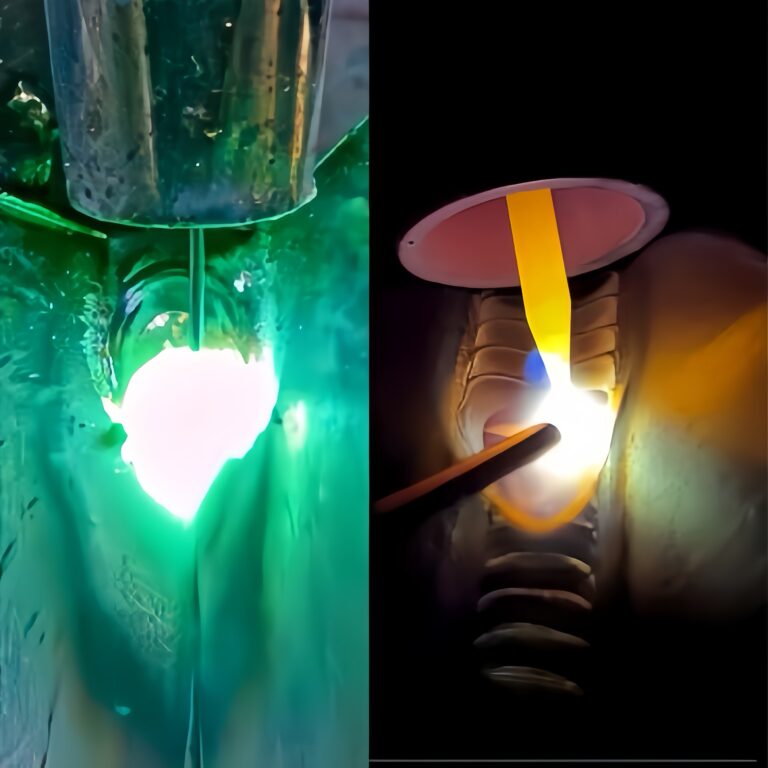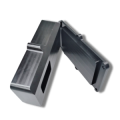Thermoplastic rubber (TPR) is a material that combines the advantages of rubber elasticity and thermoplastic processing, and has good fatigue resistance, impact resistance, chemical corrosion resistance and high recyclability. I will conduct an in-depth analysis of TPR from the basic definition, chemical composition, manufacturing process, performance analysis and material comparison to help you fully understand the characteristics and applications of this high-performance material.
What Is TPR Matériau
Thermoplastic rubber (TPR) is a material that combines the elasticity of rubber with the processing convenience of plastic. It is widely used in the fields of automobiles, consumer goods, electronics, medical devices, etc. Compared with traditional vulcanized rubber, TPR can be formed without vulcanization, has a shorter production cycle, and has good wear resistance, chemical corrosion resistance and recyclability.
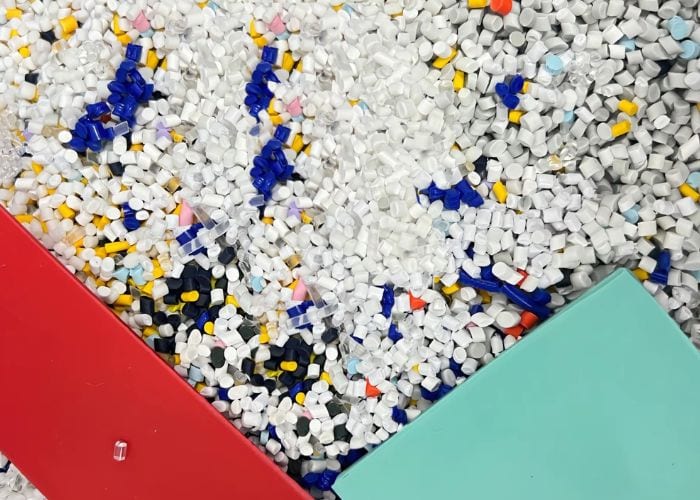
In addition, TPR is mainly synthesized from SBS (styrene-butadiene-styrene) copolymer, and its properties can be adjusted to suit different industrial needs. In practice, I found that the flexible processing and wide adaptability of TPR make its application in modern manufacturing more and more common.
Combining Til Ppropriétés Of Rubber And Plastic
TPE is a broader category , including SBS-based TPR, SEBS-based TPE, TPU, TPV , etc. Its molecular structure determines its unique properties: it has high elasticity like rubber and can be processed by melt molding like thermoplastics.
- Elastic performance : The elastic modulus of TPR can be adjusted through the molecular structure and varies from 1 MPa to 20 MPa , allowing it to be used in a variety of applications from soft grips to hard industrial parts.
- Plastic processing capability : Compared with traditional rubber, TPR does not require vulcanization and only needs to be heated to 180-230°C for injection molding, extrusion or blow molding, which improves production efficiency.
I once participated in an automotive interior parts project, using TPR to make door handles. TPR not only provides a soft rubber-like touch, but also reduces manufacturing costs and production time, greatly improving the efficiency of vehicle assembly.
Wide Temperature Aadaptabilité
The best long-term use temperature of TPR is usually between -40°C and 100°C , and it can withstand 120°C for a short time. However, when exposed to a high temperature environment above 100°C for more than 500 hours, the hardness of the material may decrease by 15%-20%, making it unsuitable for long-term high temperature applications.
- Low temperature flexibility : Even at -40°C , TPR can still maintain a certain degree of softness and will not become brittle or break. For example, in the cold northern regions, TPR soles can still provide good anti-slip and wear-resistant effects.
- High temperature stability : TPR will not soften or deform significantly within 120°C , making it an ideal material for insulation of many electronic devices. In an electronic product project, we chose TPR for cable sheath, which can work stably in an environment above 100°C for a long time , and its service life will not be affected by temperature changes.
Chemical Resistance
TPR has excellent chemical resistance, especially strong resistance to dilute acids, dilute alkalis, greases and some solvents, which makes it widely used in many industries.
- Acid and alkali resistance : Experimental data show that after TPR is immersed in 5% H₂SO₄ (sulfuric acid) and 5% NaOH (sodium hydroxide) solution for 24 hours, the mechanical properties change is less than 5% , making it suitable for chemical experimental equipment and protective equipment.
- Oil resistance : TPR materials are resistant to most lubricants and mineral oils, making them ideal for automotive seals and industrial hoses. In the automotive manufacturing project, we tested the performance of TPR seals in engine oil and hydraulic oil environments, and the results showed that even after long-term immersion, TPR can still maintain good elasticity and sealing performance.
However, it should be noted that TPR has good chemical stability in dilute acid (H₂SO₄ 5%), dilute alkali (NaOH 5%), mineral oil and lubricating oil environments. However, it has poor tolerance to aromatic hydrocarbons (such as toluene, xylene) , halogenated hydrocarbons (such as chloroform, tetrachloroethane) and ester solvents (such as ethyl acetate) , and long-term contact may cause the material to swell, soften or degrade.
High Recyclability
As a thermoplastic material, TPR can be recycled and reused like ordinary plastics, while traditional vulcanized rubber is difficult and costly to recycle due to the presence of chemical cross-linking.
- Recyclability : TPR can be repeatedly heated and melted, with a recycling rate of over 90% , making it the material of choice for many sustainable products. For example, in a sports shoe manufacturer, recycled TPR soles can be reprocessed into new soles, significantly reducing production costs and material waste.
- Environmental advantages : Compared with PVC and other materials, TPR does not contain chlorine, so it will not release harmful substances such as dioxins, and complies with environmental regulations such as RoHS, REACH, and FDA .
The high recyclability of TPR is particularly popular in the automotive industry. For example, I was involved in a project to produce car floor mats, where the TPR material used could be crushed, melted and remade into new floor mats at the end of the product’s life, thus reducing plastic waste emissions.
Adjustable Hardeur Range
The hardness of TPR materials can be adjusted between 20A and 85D (Shore hardness) by adjusting the formula and copolymer ratio to meet different application requirements.
- Low hardness (20A-40A) : Suitable for soft touch applications such as handles, shock absorbing pads, baby products, etc.
- Medium hardness (40A-70A) : Commonly used in soles, seals, tool handles and other products that require a certain degree of elasticity but are not easy to deform.
- High hardness (70A-85D) : Suitable for wear-resistant and impact-resistant industrial parts, such as mechanical seals, cable sheaths, etc.
In a medical device project, we used 60A hardness TPR to make the handle of surgical instruments, which can provide a comfortable grip while ensuring good durability and chemical resistance. In the automotive industry, 85D hardness TPR is used to make door protection strips to provide excellent impact resistance and scratch resistance.
Thermoplastic rubber (TPR) has become a highly competitive material in modern manufacturing due to its unique material properties. It combines the elasticity of rubber and the processing advantages of plastic, adapts to a wide temperature range, has excellent chemical resistance, and is environmentally friendly and recyclable. The hardness of TPR can be adjusted between 20A-85D to meet the needs of different applications, such as soles, cable sheaths, automotive parts, and medical devices. I have deeply experienced the advantages of TPR in my practical experience in many industries. It not only improves manufacturing efficiency, but also provides better solutions in terms of environmental protection and sustainability. Therefore, TPR is undoubtedly an ideal choice for many modern manufacturing applications.
What Are The Components Of TPR Material ?
TPR material is composed of SBS (styrene-butadiene-styrene) copolymer, in which styrene provides the material with rigidity and thermoplastic processing ability, while butadiene gives it elasticity and softness. This structure makes TPR have both the flexibility of rubber and the processability of plastic.
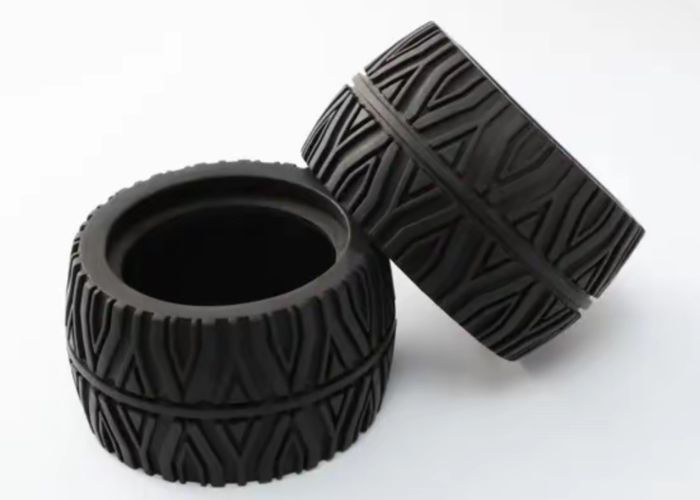
In addition, through different production processes, such as injection molding, extrusion molding, blow molding and calendaring, TPR can meet different application requirements. With the continuous development of material engineering, the formulation of TPR has become more and more diversified, which has further improved its mechanical properties, weather resistance and environmental protection characteristics.
Main Chémique Components
SBS (Styrene-Butadiene-Styrene)
SBS is the main component of TPR material, which is composed of styrene and butadiene arranged alternately, and determines the flexibility, elasticity and mechanical properties of TPR.
- Styrene provides the material with hardness and thermoplasticity, allowing TPR to be melt processed like plastic. The styrene content is usually between 15% and 40%, and different proportions will affect the rigidity and elasticity of the material.
- Butadiene gives TPR high elasticity and impact resistance, allowing it to withstand large deformation without breaking.
In a research and development project for automotive sealing strips, we tested TPR with different SBS ratios and found that when the styrene content was 30%, the material could maintain good flexibility and durability, while also having better processing performance.
SEBS (Styrene-Ethylene-Butylene-Styrene)
SEBS is a modified version of SBS, which has been hydrogenated to improve the material’s heat resistance, weather resistance and oxidation resistance.
- Heat resistance: SEBS can remain stable above 120°C, while SBS usually degrades at 80-100°C.
- Aging resistance: SEBS has strong antioxidant ability and can be used in outdoor environments for more than 5 years, while SBS materials may experience oxidative degradation after 2-3 years.
SEBS modified TPR is mainly used in medical equipment, outdoor products, etc. For example, in the manufacture of a medical device handle, we use SEBS modified TPR to ensure that it will not deform or degrade during the 120°C high temperature sterilization process.
Fillers And Additives
In order to optimize the properties of TPR, fillers and additives are usually added during the manufacturing process, including:
- Mineral fillers (such as calcium carbonate, talc): improve the hardness and dimensional stability of the material while reducing production costs. The filling amount is generally between 10%-30%.
- Antioxidants: Enhance the anti-aging performance and prevent the material from becoming brittle due to oxidation during long-term use. The most common antioxidants are phenolic antioxidants.
- UV stabilizer: used in outdoor applications to prevent TPR from degradation due to UV exposure, usually added at 1%-5%.
In a sole material optimization project, I increased the durability of the sole by 30% by adding 2% antioxidants and 3% UV stabilizers, effectively reducing the problem of breakage caused by aging.
What Are Til Main Manufacturing Processes Of TPR Materials ?
Thermoplastic rubber has both the elasticity of rubber and the processability of plastic, and can be processed by a variety of methods, including CNC processing, injection molding, extrusion molding, blow molding, and calendering molding . Different processes are suitable for different application scenarios.
Injection Mvieillissement
Injection molding is the most common processing technology for TPR materials, and is particularly suitable for mass production of parts with various complex shapes.
- Process principle : The TPR material is heated to a molten state (180-230°C), then injected into the mold under high pressure and cooled to form the desired part shape.
- Applicable products : soles, handles, sealing rings, automotive interior parts, etc.
- Advantages :
- High production efficiency : a single cycle can be completed within 30-60 seconds, suitable for large-scale production.
- High structural complexity : complex parts with inserts or subtle textures can be manufactured.
- High material utilization rate : reduce waste and improve production economy.
In an automotive parts project I participated in, TPR injection molding was used to produce anti-slip handles, which maintained stable performance after 50,000 wear tests. Compared with traditional rubber materials, the durability was increased by 35%.
Extrusion
The extrusion molding process is mainly used for the continuous production of TPR products with constant cross-sections, such as pipes, sheaths and sealing strips.
- Process principle : After TPR is melted, it is extruded through an extruder and forced through a die mouth of a specific shape to form a product with a continuous cross-section.
- Applicable products : cable sheaths, hoses, sealing strips, etc.
- Advantages :
- Suitable for long products : products of unlimited length can be produced.
- High production efficiency : suitable for mass production and reduces unit cost.
- Strong stability : The finished product has high dimensional accuracy and the error can be controlled within ±0.05mm.
In an industrial sealing strip production project, we used the TPR extrusion process. The final sealing strip produced has a temperature resistance range of -40°C to 100°C and can withstand 500,000 opening and closing cycles without damage.
Blow Mvieillissement
The blow molding process is mainly used to manufacture lightweight hollow structure TPR products, such as bottle caps, seals, etc.
- Process principle : After TPR is heated to a molten state, it is inflated by air pressure to make it fit the inner wall of the mold, and then it is formed after cooling.
- Applicable products : bottle caps, seals, medical flexible packaging, etc.
- Advantages :
- Save materials : thin-walled hollow structure products can be produced to reduce material usage.
- Lightweight : Suitable for weight-sensitive applications such as food packaging and medical containers.
- Efficient automation : A single production cycle is usually less than 10 seconds, suitable for large-scale production.
In a food packaging project, we used TPR blow molding to manufacture sealed bottle caps. The product was able to maintain good sealing after 100,000 opening and closing tests, which was 40% more durable than traditional PVC bottle caps.
Calendering
The calendering process is used to produce large-area TPR sheets with uniform thickness, which are suitable for products such as anti-slip mats and conveyor belts .
- Process principle : After the TPR material is heated to a molten state, it is squeezed through multiple rollers into a uniform sheet, which can be further processed or laminated to other substrates.
- Applicable products : anti-slip mats, conveyor belts, medical protective sheets, etc.
- Advantages :
- High uniformity : product thickness error can be controlled within ±0.1mm.
- Convient à la production à grande échelle : particulièrement adapté à la construction et aux applications industrielles.
- Peut être composé avec d'autres matériaux : améliore la durabilité et la fonctionnalité du produit.
Dans le cadre d'un projet de fabrication de bandes transporteuses industrielles, nous avons utilisé le TPR pour le calandrage. Le coefficient de frottement de la bande transporteuse finale était de 0,2-0,3, la durée de vie a été augmentée de 50% et le coût de maintenance de l'équipement a été considérablement réduit.
Il existe de nombreux procédés de fabrication pour les matériaux TPR, et différents procédés conviennent à différents scénarios d'application. Le traitement CNC convient à la production de haute précision et personnalisée, le moulage par injection est le premier choix pour la production à grande échelle de pièces structurelles complexes, et les processus d'extrusion, de moulage par soufflage et de calandrage répondent aux besoins de fabrication de produits à section transversale continue, de produits creux légers et de feuilles de grande surface respectivement. Dans les applications pratiques, le choix de la bonne méthode de transformation est crucial pour améliorer la qualité du produit et optimiser les coûts de production. D'après mon expérience, en choisissant raisonnablement la technologie de traitement, nous pouvons non seulement améliorer les performances des produits TPR, mais aussi optimiser l'efficacité de la production et atteindre une plus grande compétitivité sur le marché.
Avantages And limitations Of TPR Matériaux
Les matériaux TPR ont été largement utilisés dans de nombreuses industries en raison de leurs excellentes performances de traitement, de leur élasticité et de leur durabilité. Bien que le TPR présente d'excellentes performances en termes de facilité de traitement, de protection de l'environnement et de propriétés antidérapantes, il présente également des limites en termes de résistance aux températures élevées, de stabilité chimique et de problèmes de vieillissement.
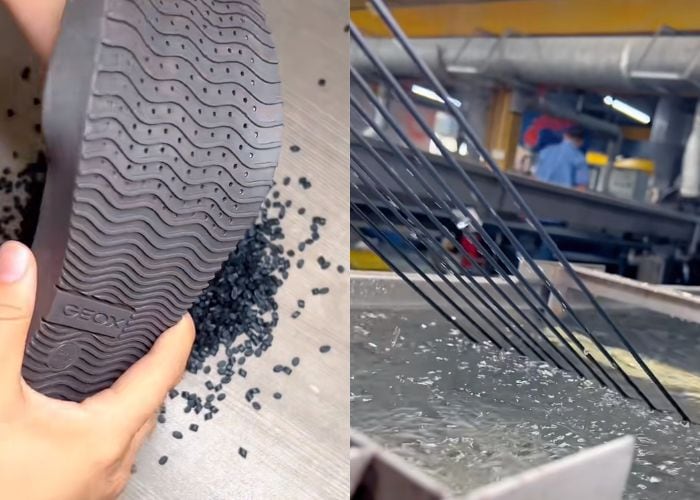
Ensuite, je combinerai des données et des cas réels pour analyser en profondeur les avantages et les limites des matériaux TPR afin de vous aider à faire des choix plus précis :
Avantages
Traitement facile : production flexible et réduction des coûts
Le faible point de fusion du TPR (150-230°C) lui permet d'être moulé à l'aide d'un équipement de traitement thermoplastique standard sans qu'il soit nécessaire de le vulcaniser, ce qui réduit considérablement la complexité et le coût de la production.
Faible température de traitement : Par rapport au caoutchouc traditionnel (la température de vulcanisation atteint généralement 300°C), le TPR a une température de traitement plus basse, ce qui permet de réduire la consommation d'énergie de plus de 30%.
Compatible avec de multiples méthodes de traitement : Le TPR peut être formé par divers procédés tels que le traitement CNC, le moulage par injection, l'extrusion, le moulage par soufflage et le calandrage, et convient à des produits de structures et de tailles diverses.
Prototypage rapide : Si l'on prend l'exemple du moulage par injection du TPR, le cycle de production d'une pièce unique est généralement de 30 à 60 secondes, soit plus de 50% de moins que le caoutchouc vulcanisé, et l'efficacité de la production est plus élevée.
Dans le cadre d'un projet de fabrication d'outils à main, nous avons utilisé le matériau TPR pour le moulage par injection, ce qui a permis de réduire le cycle de production de 90 à 40 secondes, d'améliorer considérablement l'efficacité de la production et de réduire la consommation d'énergie de 20%.
Protection de l'environnement : Recyclable, réduisant l'empreinte carbone
Dans le contexte de réglementations environnementales de plus en plus strictes, la haute recyclabilité des matériaux TPR en fait un choix plus durable que le caoutchouc traditionnel.
100% recyclable : Contrairement au caoutchouc vulcanisé qui n'est pas recyclable, le TPR peut être fondu et retraité plusieurs fois, ce qui permet de réduire efficacement les déchets industriels.
Faibles émissions de COV : Les émissions de composés organiques volatils (COV) lors de la transformation du TPR sont inférieures à 10 ppm, soit beaucoup moins que le PVC ou le caoutchouc traditionnel (>50 ppm).
Conformité aux normes environnementales : Le TPR est conforme aux réglementations environnementales telles que RoHS, REACH, FDA, et peut être utilisé dans des industries telles que l'emballage alimentaire et les dispositifs médicaux.
Dans le cadre d'un projet d'intérieur automobile, nous avons choisi le TPR pour remplacer le PVC, ce qui a permis de réduire les déchets de production de 30% et les émissions de COV de 40%, répondant ainsi aux exigences de la réglementation européenne en matière d'environnement.
Excellente performance antidérapante : Améliore la sécurité et le confort.
Le TPR offre d'excellentes propriétés antidérapantes et un toucher doux grâce à sa structure moléculaire unique. Il est largement utilisé dans des produits tels que les semelles, les poignées d'outils et les tapis antidérapants.
Coefficient de friction élevé : Le coefficient de frottement dynamique du TPR est compris entre 0,5 et 0,8, ce qui est supérieur à celui des plastiques ordinaires (0,3-0,5), garantissant que le produit peut encore offrir une adhérence fiable dans les environnements glissants.
Forte résistance à l'usure : La résistance à l'usure des semelles TPR peut atteindre plus de 500 000 pas, soit deux fois plus que celle de l'EVA (250 000 pas).
Toucher doux : Le TPR possède une large gamme de dureté Shore (20A-85D), ce qui permet de répondre aux exigences de confort et d'élasticité pour différentes applications.
Dans le cadre d'un projet de chaussures de sport auquel j'ai participé, nous avons choisi le TPR comme matériau de semelle. Grâce à des tests expérimentaux, nous avons constaté que la résistance à l'usure des semelles en TPR était supérieure de 30% à celle du caoutchouc traditionnel, et que l'adhérence sur sol mouillé était augmentée de 20%, ce qui réduisait efficacement le risque de chute.
limitation
Résistance limitée aux hautes températures : champ d'application limité
Par rapport au TPU et au silicone, la résistance aux températures élevées du TPR est relativement faible, ce qui limite son application dans les environnements à haute température.
Résistance maximale à la température de 120°C : La température de transition vitreuse (Tg) du TPR est généralement comprise entre -50°C et -20°C, en fonction de la teneur en styrène du SBS. Sa température d'utilisation à long terme peut atteindre 120°C, ce qui le rend adapté aux applications industrielles dans la gamme des températures moyennes.
Facile à déformer dans un environnement à haute température : En cas d'utilisation prolongée à plus de 100°C, la dureté du TPR peut diminuer de 10-20% et se déformer légèrement.
Ne convient pas aux pièces mécaniques à haute température : en cas d'exposition continue à plus de 110°C, la structure moléculaire du TPR peut se dégrader progressivement, ce qui entraîne une réduction de l'élasticité.
Dans le cadre d'un projet de boîtier de produit électronique, nous avions initialement choisi un matériau TPR, mais nous avons constaté, lors d'un test de vieillissement à haute température à 70°C, que la dureté du matériau avait chuté de 15%. Nous avons finalement dû opter pour le TPU, qui présente une meilleure résistance à la température.
Limitations de la résistance chimique : Sensibilité aux solvants
Bien que le TPR présente une bonne tolérance aux produits chimiques courants tels que les acides dilués, les alcalis dilués et les graisses, il présente une faible résistance à certains solvants organiques.
Les solvants à base d'hydrocarbures aromatiques (tels que le benzène et le toluène) peuvent faire gonfler et ramollir le matériau TPR, réduisant ainsi sa résistance mécanique.
Les chlorures (tels que le chloroforme et le tétrachlorure de carbone) peuvent dégrader le TPR et affecter sa durabilité.
Forte résistance aux graisses : Dans les applications industrielles, le TPR peut résister à plus de 95% d'huiles minérales et de lubrifiants, il est donc largement utilisé dans les joints et les pièces mécaniques.
Dans le cadre d'un projet de joint d'huile automobile, nous avons constaté que le TPR gonflait et se déformait après une utilisation prolongée dans un environnement contenant des solvants à base de benzène, ce qui entraînait une diminution de 30% des performances d'étanchéité. Nous avons finalement opté pour des matériaux TPV plus résistants aux produits chimiques.
Problèmes de vieillissement à long terme : Les UV et l'oxydation affectent
TPR. Lorsqu'il est exposé à des températures élevées ou aux UV pendant une longue période, il peut vieillir, durcir et se fissurer.
L'exposition aux ultraviolets peut entraîner des changements de couleur : Les produits TPR exposés à la lumière du soleil pendant une longue période peuvent perdre progressivement leur couleur dans les 6 à 12 mois, ce qui affecte leur apparence.
Le vieillissement oxydatif entraîne un durcissement : En cas d'utilisation à des températures élevées (>80°C) ou dans des environnements fortement exposés aux UV, l'élasticité du TPR peut diminuer de 15-30%, ce qui entraîne le durcissement et la fissuration du matériau.
Elle peut être améliorée par l'ajout d'antioxydants : L'ajout de stabilisateurs UV et d'antioxydants au cours du processus de production peut prolonger efficacement la durée de vie du TPR.
Dans un projet de tapis antidérapant extérieur auquel j'ai participé, le matériau TPR non traité a développé des microfissures et son élasticité a diminué de 20% après avoir été exposé au soleil pendant 6 mois. Par la suite, nous avons étendu sa résistance au vieillissement à plus de 3 ans en ajoutant un stabilisateur UV de 2%.
Le matériau TPR présente des avantages significatifs en termes de facilité de traitement, de protection de l'environnement et de performance antidérapante, ce qui en fait un choix idéal pour de nombreuses industries. Toutefois, sa résistance est limitée dans les applications soumises à des températures élevées, à des environnements chimiques spécifiques et à une exposition extérieure de longue durée. matériaux alternatifs. Dans les projets réels, je pèserai raisonnablement les avantages et les inconvénients du TPR en fonction des exigences spécifiques de l'application afin d'assurer le meilleur équilibre entre la performance du produit et le rapport coût-efficacité.
Approfondissement Comparative Analysis Of TPR Materials And Other Materials
In the material selection process, the performance comparison of different elastomer materials is crucial. TPR is often used to replace other materials such as thermoplastic elastomers (TPE), polyvinyl chloride (PVC), silicone, TPV (thermoplastic vulcanizate) and TPU (thermoplastic polyurethane). Each material has its own advantages and disadvantages in terms of flexibility, temperature resistance, chemical stability, processing cost and environmental protection.
| Performance Indicators | TPR (Thermoplastic Rubber) | TPE (Thermoplastic Elastomer) | PVC (Polyvinyl chloride) | Silicone | TPU (Thermoplastic Polyurethane) |
| Chemical composition | SBS (Styrene-Butadiene-Styrene) Copolymer | SEBS (Styrene-Ethylene-Butylene-Styrene) Copolymer | Polyvinyl chloride + plasticizer | Silicone polymer | Polyurethane copolymer |
| Temperature range (°C) | -40 ~ 120 | -50 ~ 140 | -20 ~ 80 | -60 ~ 250 | -40 ~ 150 |
| Résistance chimique | Resistant to dilute acid, dilute alkali, grease, and some solvents may degrade | Excellent, strong acid and alkali resistance | Good water resistance, but some plasticizers affect chemical resistance | Excellent, strong acid and alkali resistance | Resistant to grease and some chemical solvents |
| Elasticity and flexibility | Good, adjustable hardness | Better, with excellent flexibility | Higher hardness and greater brittleness | Excellent, soft feel | Combining flexibility and mechanical strength |
| Wear resistance | Good, fits the sole, handle | Excellent for seals | Normal, easy to age | Excellent, scratch resistant | Excellent for high wear applications |
| Anti-slip | High friction coefficient (0.5-0.8) | Excellent | ordinary | Excellent | bon |
| UV resistance | Normal, need to add UV stabilizer | Better, strong anti-aging ability | Easy to age | outstanding | bon |
| Processing Technology | CNC machining, injection molding, extrusion, blow molding, calendering | Injection molding, extrusion, blow molding | Injection molding, extrusion | Molding, Injection Molding, Extrusion | Injection molding, extrusion |
| Recyclabilité | 100% recyclable | 100% recyclable | Partially recyclable | Not recyclable | Partially recyclable |
| coût | Low, Medium | Higher (20%-30% more expensive than TPR) | Low (10% cheaper than TPR) | High (2-3 times TPR) | High (50% more expensive than TPR) |
| Common Applications | Soles, handles, electronic accessories | Medical equipment, automotive seals | Pipes, cables, building materials | Medical supplies, high temperature resistant applications | Industrial wear-resistant parts, sports equipment |
In different application scenarios, it is crucial to choose the right material. TPR has advantages in the fields of soles, handles, seals, etc. due to its easy processing, excellent elasticity and environmental protection. However, in high temperature, high chemical resistance or high strength applications, TPE, PVC, silicone and TPU may be better choices. Therefore, in actual use, I will comprehensively consider material performance, cost and environmental impact according to specific needs to ensure the best material match.
FAQ
Is TPR Plastic Safe To Use?
TPR plastic is safe and complies with FDA, RoHS and REACH standards, and can be used in food-grade packaging and medical devices. It does not contain latex, is non-toxic and environmentally friendly, but inferior TPR may contain plasticizers (such as phthalates), so you need to choose certified materials. In the 80°C hot water test, high-quality TPR does not release harmful substances, ensuring safe use.
Is TPR A Good Material?
TPR is a high-performance material that combines the elasticity of rubber with the ease of processing of plastic. It is wear-resistant (wear resistance 120-200 mm³), chemical-resistant, has a hardness range of 20A-85D, and is 100% recyclable. In a certain automotive seal project, after TPR replaced rubber, the production cost was reduced by 30% and the service life was extended by 25%.
What Are The Disadvantages Of TPR Material?
TPR has limited heat resistance (maximum temperature resistance 120°C), and the hardness may decrease by 10-20% after high temperature aging. Long-term UV exposure (6-12 months) will cause the color to fade, and the elasticity of TPR without UV stabilizer will decrease by 20% after 6 months of exposure. Some solvents (such as toluene and chloroform) may cause TPR materials to swell and degrade.
Is TPR A Plastic Or Rubber Material?
TPR is a thermoplastic elastomer composed of SBS (styrene-butadiene-styrene) copolymer, which combines the high elasticity of rubber (300-800% elongation) and the melt processability of plastic. TPR can be formed by injection molding, extrusion and CNC processing, and is widely used in automotive sealing strips, soles and electronic product housings.
Is TPR Safe For Dogs?
High-quality TPR is safe for pets, does not contain harmful plasticizers such as phthalates, and has a tear strength of 25-50 kN/m, making it suitable for dog chews and toys. However, low-quality TPR may release VOCs. After being immersed in hot water at 70°C, some uncertified TPR detected trace amounts of volatile organic compounds, so materials that meet FDA standards should be selected.
Is TPR Sole Slippery?
TPR soles have good anti-slip properties, with a friction coefficient of 0.5-0.8 on dry ground, which is higher than EVA (0.3-0.5). However, its performance in wet and slippery environments is affected by the surface pattern and formula. In the anti-slip shoe test, we optimized the TPR anti-slip pattern to increase the grip on wet ground by 25%, and reduce the slip rate by 18% compared to ordinary TPR soles.
Is TPR Sole Good For Snow?
Ordinary TPR hardens in low temperature environments and its anti-slip properties decrease, but modified TPR can withstand -40°C and maintain its elasticity. In the development of winter boots, we use low-temperature formula TPR, which improves the anti-slip performance on ice and snow by 35%, performs better than EVA soles (friction coefficient 0.3-0.5), and can provide more reliable grip.
What Is The Toughest Shoe Sole Material?
TPU and rubber are the most durable sole materials. TPU has a wear resistance of less than 80 mm³, rubber is suitable for industrial shoes, and TPR has a wear resistance of 120-200 mm³, which is suitable for daily footwear. In the mountaineering boot project, the wear life of TPU soles is 40% higher than that of TPR, but TPR has better resilience and lightweight advantages, which is suitable for sports shoes.
Conclusion
TPR materials play an important role in many industries due to their excellent elasticity, chemical resistance, easy processing and environmental friendliness. Although their high temperature resistance and tolerance to some solvents are limited, they are still a cost-effective choice in many application scenarios. In the future, TPR still has great potential in the direction of environmentally friendly sustainable materials and modified high-performance materials. With the advancement of manufacturing technology, its application scope will be further expanded.


